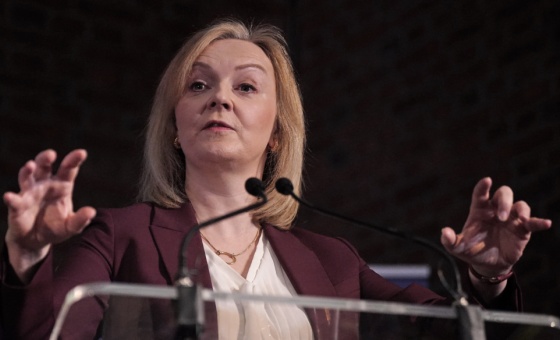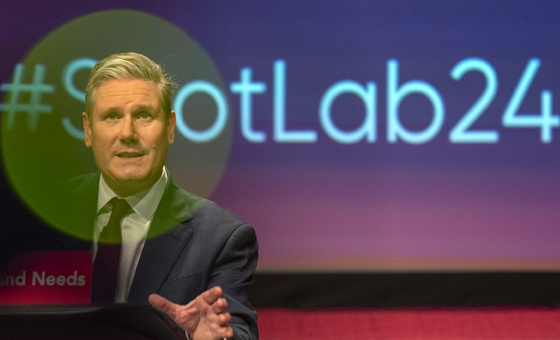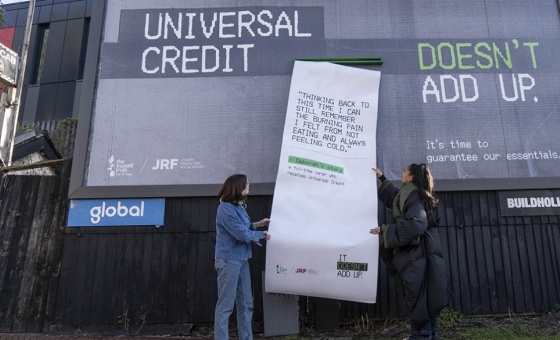This is the last article you can read this month
You can read more article this month
You can read more articles this month
Sorry your limit is up for this month
Reset on:
Please help support the Morning Star by subscribing here
ONE of the striking features of federal elections is their increasingly undemocratic nature and Americanisation. Much of the electioneering by major parties has been short grabs for the media pack and personal jibes between leaders.
The two issues that pose an existential threat to the survival of humanity — climate change and nuclear war — received little airing during the election campaign.
Prime Minister Scott Morrison attempted to make national security an issue but pulled his head in after his government’s “failure” as the US’s deputy sheriff for “letting” (media’s colonial language) the Solomon Islands sign a security agreement with China.
The Labor Party was all too eager to take a bipartisan approach on the US nuclear submarine alliance, Aukus and obscene spending on war preparations.
The cost-of-living crisis was widely aired by the media, but it was not until late in the campaign that the question of wages took centre stage.
As for trade union rights that are essential to the struggle for higher wages and better working conditions, there was little on offer.
The election campaign was largely fought on personalities, one-liners and a media scrum more focused on getting “gotcha” moments than seeing party policies aired.
The so-called “teal independents” received an unusual amount of media exposure compared with of coverage of independents in past elections.
The democratic structures of the major parties were overridden, with members disenfranchised on the selection of candidates.
Instead, Liberal Party leader Scott Morrison and Labor Party leader Anthony Albanese parachuted in their captain’s picks against the wishes of local members.
Political donations
Along with the millions in taxpayer dollars dished out to Liberal and Labor parties based on the vote they received, these parties have millions more dollars at their disposal to run expensive media campaigns and pay top consultants to design their campaigns.
The Australian Electoral Commission (AEC) reports annually on political donations. As they cast their vote, the electorate is not aware of donations from corporations and individuals who might be in a position to exert influence over politicians and political parties.
Under present law, donors, candidates and Senate groups are required to disclose all donations over $14,500 (£8,170) not later than 15 weeks following the elections.
This $14,500 cap on donations enables large donors to split their donations into numerous below-threshold payments to avoid scrutiny. The parties also have fundraising fronts and other means of keeping the public in the dark.
For 2020-21, the AEC reported that Australia’s political parties collectively received $177 million (£99.7m) in income but only 9 per cent of it identified the true donors, due to the extremely weak provisions of the Electoral Act.
The Sydney Morning Herald (April 17 2022) reports that candidates and parties were expected to spend more than $500 million (£56.4m) in the election campaign.
As the Grattan Foundations states: “Donations open powerful doors.” But the public is kept in the dark as to who these donors are that wield so much power.
The big banks, the resources sector, media magnates, the military industrial complex and powerful corporate donors rule Australia.
This system based on theft is by definition corrupt through and through. It’s no coincidence that the Australian Greens, who are not beholden to the coal barons or war machine, are given little airtime.
Maintaining the Liberal/Labor duopoly
Of all the parties and independents standing in the elections, the Australian Greens had the most progressive policies, in addition to their environmental policies and commitment to tackling climate change.
They rejected the Liberal-National Coalition government’s climate target: “Net zero by 2050 is not a climate target, it’s a death sentence.”
They called for a formal, legislated plan to reduce Australia’s emissions by 75 per cent by 2030 and phase out coal and gas: “Our future depends on it.”
They support trade union rights including the right to strike, Medicare with the inclusion of dental health, publicly owned services, indigenous rights and women’s rights, to name a few.
The electoral system in Australia falls far short of being democratic. It works to maintain the “two-party” system, virtually ensuring government to either Labor or the Liberals in coalition with the National Party.
Both the Senate and House of Representatives require reform to make them better reflect the wishes of the electorate.
The teal independents, to the extent that they prove to be truly independent of the major parties — at this time an unknown — may well see more cracks develop in the two-party system as they capitalise on the many disaffected voters.
Extreme right
Clive Palmer’s United Australia Party (UAP) rode through the campaign on populist and nationalist slogans.
It stretched the truth, promised outcomes that it cannot control, such as capping all home loan interest rates at 3 per cent for the next five years and ran with meaningless slogans like “Save Australia, Freedom Forever” targeting anti-vaxxers.
In 2019, the UAP secured only 3.4 per cent of the national primary vote and failed to pick up a seat, despite setting a new election-spending record by a party of more than $80m (£45m).
But that was not its aim. It set out to keep Labor out of office by directing preferences to the Coalition, which it succeeded in doing.
Come 2022, Palmer announced election spending of $70m and he, with a few exceptions, preferenced Coalition candidates.
There are huge financial and registration barriers to smaller parties standing, let alone competing on funds for campaigning in their own name in elections.
Reform needed
Urgent reform is needed to make the electoral system more representative and democratic. Parties should not be excluded from having their name on the ballot paper because they lack the financial means or could not jump the hurdles to be registered.
The question of political donations also requires urgent attention, with strict limits on the amount that can be spent on campaigning. There should be equal time in mainstream media for candidates and their parties to present policies.
At present, voting in the Lower House is based on a preferential system. Voters must indicate their order of preference. For example, if there are eight candidates, then the voter must put the numbers one to eight against the names of the candidates.
This is a system for the allocation of preferences where no candidate receives an absolute majority of primary votes. The bottom candidate’s preferences are allocated and so on.
Each electorate has a single member. The system is not proportional. In the 2019 federal elections, the Greens polled 10.4 per cent of the primary vote for the House of Representatives but only won one out of 151 seats.
A proportional, preferential system could be expected to have delivered around six or seven seats — far more representative of the people.
Even less democratic, the National Party with 4.5 per cent won 10 seats. Katter’s Australian Party gained 0.5 per cent of the primary vote and won one seat.
The Communist Party of Australia continues to struggle for a system with larger electorates with four or five members to be elected in each. This would provide for a proportional, preferential system of voting for the House of Representatives.
This article appeared at cpa.org.au. Anna Pha is a journalist for The Guardian, the workers’ weekly published by the Communist Party of Australia.











